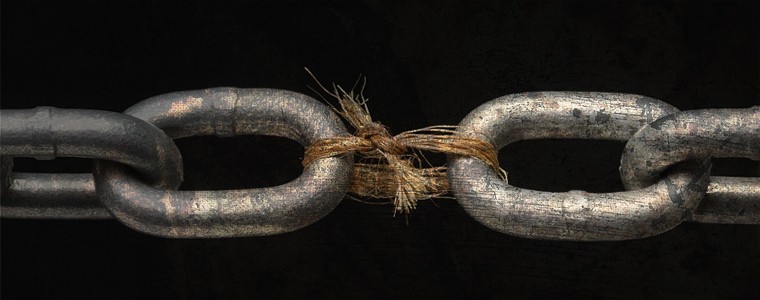My studies in self development have been long and varied, spanning (so far) over 16 years and including forays into traditional Chinese martial arts, gymnastic strength training, flexibility and mobility of many kinds, natural movement, parkour, dance, movement culture, and the more popularized forms of strength and conditioning training. In the last 5 years this has all mostly been discarded in favour of my Daoist tradition, Da Xuan, and the main reason for this is that it does what I’m interested in far more effectively than any of the former arts.The very first question that one might respond to such a statement should be: “What exactly *are* you interested in?”
Good question!
Besides the various spiritual and self development aspects I’m pursuing (which are mostly individual – who am I really, what is my path and purpose in this incarnation, am I doing this stuff because I want to or because someone else told me I should, and so on), one of the central and simple things I have been investigating for a long time is the relationship between tension, strength, weakness, and relaxation. In other words, how relaxed can I be while still remaining usefully strong? Having been lucky enough to have studied with some exceptionally bright people who are themselves leaders in this field, I have learned quite a few things about the topic which might be useful to others.
My fascination began, as far as I can recall, upon feeling the tissue quality of my first teacher, Dapeng. His soft tissue (the red muscles and white connective tissue) did not feel like any adult I had felt at the time. The quality was much more like that of a baby or a cat. It was kind of squeegy and I could palpate straight to the bone at many points on his body and by all appearances the parts I did not palpate held this quality too. The kicker was that, unlike many noodle-esque people I had met who are soft-but-not-in-the-good-way, this suppleness was matched by his way more than reasonable strength. He had strength and relaxation, and most importantly could express these two qualities simultaneously. An embodied union of opposites if I ever saw one! He could also, at will, flex the squeeginess away and his skin would feel something like hardwood to the touch. It is very strange to feel such things in an adult and I can count on one hand the amount of people I have met besides him who have these qualities since then.

At some point the idea arose in me: “could I train this body to be of such quality that a massage therapist could not find anything to work on?” It’s a lofty ideal that is probably unattainable, but that has not prevented me from trying and making some serious inroads into the matter. Along the way I have come across a number of principles that I feel should be understood if someone wants to pursue this. Let’s have a look at them now.
First up we have some of the broad principles that will help us operate and explore:
-
-
- Tension blocks circulation and by extension our capacity to feel
- Tension protects weakness
- Long term (chronic) tension falls away from conscious awareness
-
CIRCULATION
Circulation is pretty important. New and fresh in, old and stale out. We eat fresh food and breathe in fresh air, and excrete the used/stale food and breathe out the stale air. The various organic fluids bring fresh nutrients and oxygen to the far corners of the body, removing the waste products. Keeping these fluids moving through *all* corners of the body is crucial to health. In fact, in many traditional systems of medicine they have the idea that if everything is perfectly circulating then you are free of disease. It’s an ideal that we can move closer and closer towards, and in my experience doing so has an accelerating and cumulative effect on feeling and relaxation.
So we want to improve our circulation. I’ll use the image of a sponge to give an impression of the relationship we have between tension in the soft tissues and circulation. If you held a sponge in a running river it would slowly fill up with water, and new water would be moving through the entire sponge. Squeeze the sponge and the new water is blocked from going inside, instead it would go around the tight parts of the sponge. Inside the tight parts would either dry up or contain trapped water which starts to go stale. Release the squeeze and the relaxation of the sponge would drag fresh and new water through its interior and clean out the water that was trapped inside. So tension itself is not a problem and in fact very beneficial used in the right way.
Keeping tension on the other hand is not so good. If the sponge were to remain squeezed indefinitely, the trapped water would slowly become stagnant and stale, various little lifeforms that enjoy swamp like conditions would begin to party and multiply and sooner or later (read: sooner) this part of the sponge is going to end up being either gross and sludgy or dry and crusty in the situation where there is no water. Using this image to consider the soft tissues of our body we can see that it is in our best interests to keep all of the muscles undulating between a contracted and a deeply relaxed state. In other words, get rid of all of the chronic/held tension.
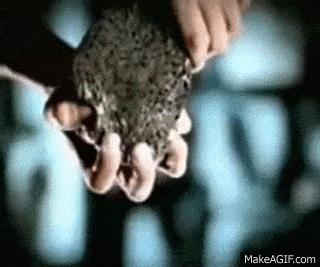
WEAKNESS
This is where we run into a bit of a conundrum. Tension is a mechanism in the body used by some kind of amazing unconscious biological intelligence to protect damaged and weakened parts of our system – parts that are not capable of producing or receiving much force. Another image to give you an impression of how this functions: when the body is damaged in some way, the tension that arises is akin to a host of guards that are called in. Their job is to make a 300-esque Spartan shield wall that surround the weak point and take all the hits of force that come through that area until the weakness is strong once more. This is a wonderful response that allows us not to be crippled for months after a small injury – if it didn’t happen the weak point would just be torn apart and mutilated the next time a significant force comes through the area.
The body gains strength from exposure to the right amount of stress and force. This force must occur within a goldilocks-like spectrum: Too little and nothing changes (actually, it will atrophy and get worse), too much and it will break. So weak areas need to be graduallyexposed to more and more force, and for them to be exposed they need the guarding tension to progressively stand down. If you put too much force through the area too soon, or by some method convince too many of the guards to stand down thereby exposing and overwhelming the weak point, the body is going to (properly) respond by re-deploying the protective tension and possibly even doubling or tripling the guard. Repeat this too many times and you dramatically increase the strength of the guards (tension) and simultaneously reduce the likelihood of getting the guards to stand down at all (relaxing). The body remembers that last time it stood the guard down things went horribly wrong and doesn’t want a repeat mistake – fair enough too!
AWARENESS AND FEELING
Our minds are being bombarded at any point by what is basically way-too-much information. To organise it so it doesn’t overwhelm us, it will push things that don’t change out of conscious awareness and into the realm of the unconscious – business as usual. Things that are changing regularly then have space to come to the forefront of our awareness so we can consider the change and adapt as necessary. Circulation is a thing that is changing regularly: new in, old out. Change, change, change of a constant but shifting kind. This means it brings feeling and awareness of what’s going on. Worse circulation: less feeling; better circulation: more feeling. You can try this for yourself, just slap your hand hard on the table and then look at it and feel it. The new stimulus makes the hand go red from new blood and various other bodily substances (increased circulation), and you can feel it a lot more clearly (increased awareness).
The issue of tension is not that it exists, but that the guards can end up permanently on duty. This not only takes a significant amount of personal resources to maintain, but as we also saw cuts off the weak links from circulation. It just kind of stays there out of sight and mind, sucking up resources – more resources if the guard has been tripled a few times. Except that it’s not out of sight at all, it is likely contributing directly and indirectly to many problems faced that are common amongst our chronically over tensioned population. The amount of times I’ve accidentally and indirectly sorted out my own, or someone else’s, problems by simply focusing on removal of seemingly-unrelated excessive tension and strengthening the weak links is high.
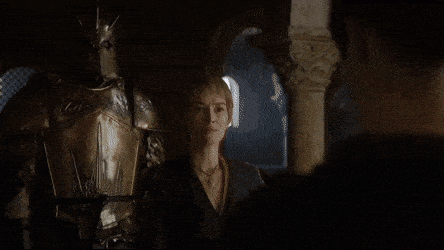
STRENGTH
My strategy for freeing myself of this tension has necessarily been a two-fold approach:
-
-
- Convince the guards to stand down (unsqueeze the sponge)
- Progressively and gradually strengthen all of the weak links until such time as a maximal force through the area doesn’t invite the guards back
-
So we have to work on strength *and* relaxation at the same time. Here’s my reasoning for why: If you only work on relaxation techniques you convince the guards to stand down but you won’t bring enough, or any, force through the weak link to stimulate it to become strong again. This means that as soon as force – especially chaotic force – is re-introduced to the area, the tension guard is re-established. Inversely, if you work only on traditional strengthening techniques, the body will (rightfully) select the strongest pathways to perform the task and reinforce them further, which will route the force via the outside of the shield wall rather than through the weak link. Basically you turn your guard into The Mountain from Game of Thrones (definitely the undead version from the later seasons), and, well, you’ll have about as much luck convincing him to stand down as Qyburn did.
Now, this does not mean you can’t get super strong by normal strengthening techniques, it’s just that by doing so you will progressively make it more difficult to access and repair the weak points that get buried under loads of very strong tension deep in the system somewhere. Depending how much you do it slows or completely stops the process – the body really has an incredible capacity to avoid using these weak points so the method used to expose them must have a way of cornering the weak link and leaving it no other choice but to gradually strengthen. If you have The Mountain there, like Cersei (who is herself quite weak), you have another choice.
Relaxation techniques can provide very useful temporary relief. Training strength in the already-strong pathways appears to make one strong at the cost of hiding the tension and weak links more thoroughly. Strength training will stop being counter-productive to our process here only once the most effective pathways of the bodily structure have been cleared of weak links, i.e. you have a good structure and the good structural pathways are also the strongest so get chosen by default, i.e. you are free of compensation patterns, i.e. the body operates as a reasonably efficient single unit that doesn’t fight itself or gravity. To accomplish this, I’ve found it best to work at things in a specific order: strengthen weak links and unite the system *first* – which is a slow, somewhat boring task that takes between 5 and 10 years as best I can see – and only after this is done work on the ‘big strength’.
STRUCTURE
The concept of the structure that I’ve mentioned here is layered. A strong structure is a frame that will hold the body up with minimal need for tension in the soft tissue to act as guy-wires. It is the strength of the well-aligned skeleton combined with reinforced joints that allows the soft tissues to relax. It needs to be particularly aligned to gravity, which is a constant force, and respond accordingly to any other external force, reorganising as needed to be a good conductor of the multiple vectors of incoming force (i.e., gravity + other). Hidden tension caused by weak links distorts this alignment, *increasing* the amount of strength/tension you need to do any given activity.

The vision from Ida Rolf shown above is pretty much spot on from the perspective of gravity, although unlike rolfing I am also interested in progressively strengthening this good alignment so it works in increasingly complex and demanding situations, against other incoming forces, and making it dynamic so that even as I move about it maintains integrity. Experientially this means that the effort is perceived more and more as ‘coming from the centre’, and as previously mentioned in another article , the centre is a funhouse of all kinds of paradox – so it makes sense that the simultaneous expression of strength and relaxation comes from there too.
A UNITED APPROACH
The most effective way I’ve found of working at this puzzle is the previously mentioned ‘doing it at the same time’. Some guidelines to look for exercises that do this are in order:
Firstly, the exercises need to be done for a long enough period of time that they can provoke the guarding tension to stand down. The simple way to do this is to exhaust the tension with the exercise. Work until the tension is felt (which is usually the point that people *stop* the exercise because it gets pretty uncomfortable), keep working until the protective tension relaxes and exposes the weak point (advanced practitioners can sometimes skip this whole step with an intentional command to relax), keep working some more to strengthen the weak point. This process can be done in some cases in a single session, in others over a number of sessions – but sustained, uninterrupted effort is a must, less the area revert to its ‘known’ format with the guards and such. The exercises(s) used must be both gentle enough so as not to further irritate the weak link and invite the guarding tension back, and strong enough or done for long enough in a single go that it will actually exhaust the guarding tension and strengthen the link. The more gentle the exercise, the longer it needs to be sustained to produce the desirable effect. Conversely, too strong and either the guard won’t stand down or if it does you’ll damage the weak link and invite the guard back. As a general guide, any exercises that require significant rest periods (days between sessions or seconds/minutes between sets & reps) to recover are not useful for this process.
Secondly, the exercises should generally be backed by a strong intention to maintain whatever the movement and structural/postural points of the exercises are, and simultaneously relax as completely as possible. This skill will always involve a little bit of back and forthing between being too relaxed where the desired posture collapses a little or you lose the motion, and being too tense. It is something that gets refined over time and more precision is necessary to find some of the deeper tensions that hang around the organs, nervous system, or deep in the emotional and mental landscapes.
Next, we want to work in both a specific way with exercises that target known weak links, and in a general way with exercises that globally target the entire system at once so that the elusive tensions and subtle compensation patterns that hide out in the shadows and escape detection can be resolved too. The very best exercises will target the specific and the global simultaneously.
Finally, over-thinking and over-analysis also create their own kind of mental tension and in bad cases can make you neurotic about something. Analysis and intellectual consideration create the structure of our training so are necessary to stop our training becoming noodle-like. Taken too far though, and it makes our minds excessively rigid – a condition that is rife in the modern world. To prevent unnecessary tension in the mental space, we need times in our practice where we don’t think, ask ‘why’, correct or analyze, but rather relax the mind as much as we can while we train. In other words, we need to spend about half our practice time following the wise words of Shia Labeouf:
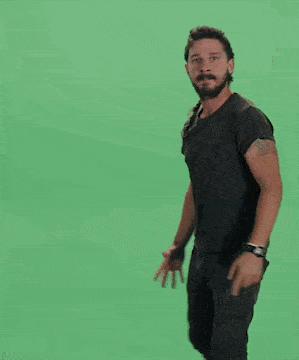
INTENSE SENSATION
We have to remind ourselves here that to get to a state of deep relaxation, we must address the weak points and that is not generally going to be a ‘fun’ experience. Often, revealing the weak link can make things feel worse than they were prior to not knowing about it. How bad the original issue was, the related emotional states, and the length of time it has been quarantined, are all factors that affect both the sensory experience and the duration needed to resolve the issue. The discovery of a previously unknown weak link can often be paired with some kind of intense and noxious sensation.
I want to take a moment to really reinforce this next point: to strengthen this weak link does not mean that we make the noxious sensations disappear, it means that we want to transform the sensation from noxious to something more managable.
Ignorance is not bliss. If the sensation disappears then you have simply reinstated (or in some cases strengthened) the guard and plunged the weak link back into the shadows of the unconscious. Once a noxious link is discovered, our aim should not be to get the rather intense, uncomfortable sensation to ‘go away’.
Noxious sensation is superior to no sensation!!!
We want to keep the sensation around and get it to participate as much as possible in what’s going on without further irritating it, until it resolves. This is a fine line to walk. A mistake that would plunge one suddenly into the wrong side of the equation can drag you back to the beginning or an even worse position. Hence, exercises that achieve this in a slower but less risky fashion are preferable. Light or medium intensity motions that are regularly repeated are ideal here. A long, slow ‘juicing’ of the weak link of all of its accumulated sludge until it’s back to fresh and full capacity is what we’re after. To go back to the image of the swampish sponge, we want to continuously squeeze and release it until it is clear of all swamp-like materials and only fresh water is moving through. The felt sensation at the point of resolution is really very close to the feeling of a clean river running through the affected area. The transformation of the noxious sensations into this clean and fresh sensation is one of the good signs of successful resolution, the disappearance of the noxious without this (or another) new sensation is not desirable. We must then rinse and repeat this process with the next hidden tension and weak link (pun intended).
As the great sage Nisargadatta Maharaj once said: “And soon you will see your mistake. And it is in the very nature of a mistake to cease to be, when seen.” Literally all we need to do is ‘see’ the weak point for enough time that it is thoroughly ‘seen’/known.
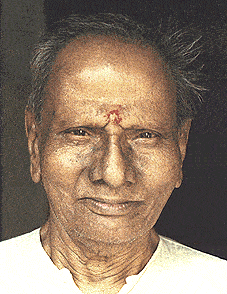
As you might imagine this is quite like going down the rabbit hole. Resolution of one tension and weak link can reveal more tension and weakness that was hidden deeper in the system. I will remind the reader again that this is viewed as a positive in this approach. To clean it all out we must go right down to the very centre – literally all the small tensions near the bones, organs, nervous system sheaths and so on. It’s a long process and if you want to do any more than a superficial job it becomes quite necessary to put down many activities that would go against it, or risk stretching the process out by decades and decades. The good news is that when it’s done it’s pretty much done – even in the case of re-injury, being armed with the skills to start resolving it immediately means things don’t really get stuck in the system again. In my personal experience the (progressively more) united expression of effortless, relaxed strength has been infinitely more interesting and wonderful to live with and have readily available than the raw strength I had worked on in the past.
HOW TO START
So this is what I’m interested in and if your interest is now sufficiently piqued and you are wanting some exercises to get started with this mammoth task, I might remind you of what I actually do for a living: teach people to resolve this tension. I have plenty of stuff available for the task too!
The teachings that I now offer, and the themes in this article, are all based on what I’ve learned in Da Xuan. Most are either directly and strictly from Da Xuan or are exercises from other modern and traditional systems that I am showing in a specific way congruent with this model and approach. When I’ve posted these exercises I’ve always included the ‘how to’ in terms of the cues and needed timing, but rarely included the ‘why should I’ part. If you’re a person that needs a ‘why’ to begin doing something then hopefully this article serves that purpose. As for the exercises themselves, you can find a selection of options below:
CLICK HERE TO SEE THE DETAILS OF ONLINE TRAINING
This is a personalized training based on the Da Xuan tradition where we will go through all of this and much more.
CLICK HERE TO VIEW MY PAY TO DOWNLOAD TUTORIALS
Specifically I would recommend the Jibengong and the 7 Base Metal Stances courses to cover the more global approach, and any of the body awakening exercises for particular focus, but they are all useful!
CLICK HERE TO VIEW MY YOUTUBE CHANNEL
There’s heaps of free stuff here, exercises, talks and more!
Of course if you’re curious or have questions about any of the topics of this article feel free to shoot me an email or contact me in any other way.
Happy training!

